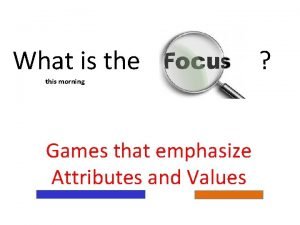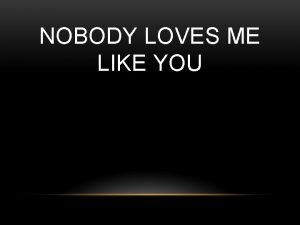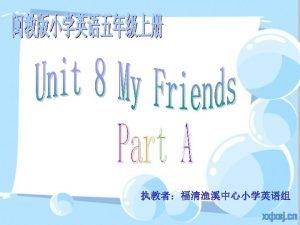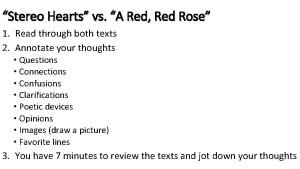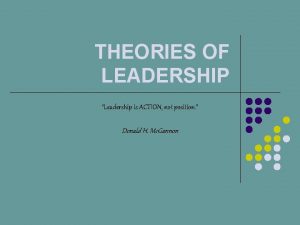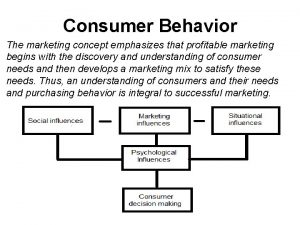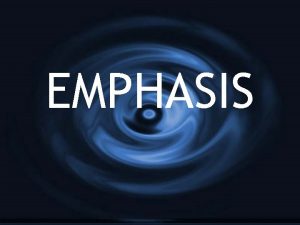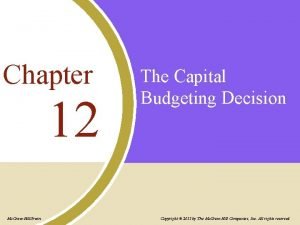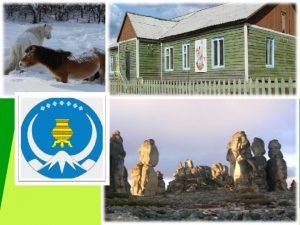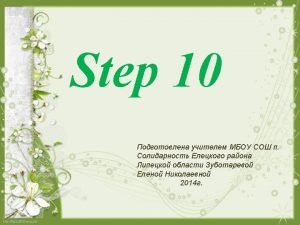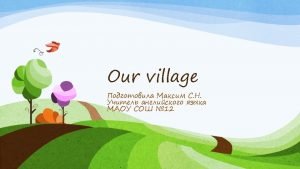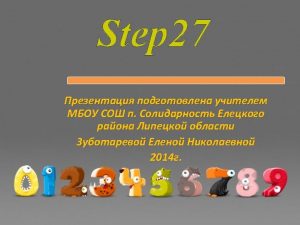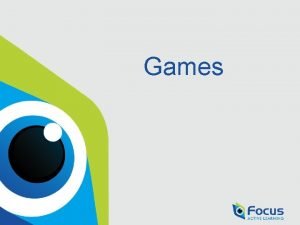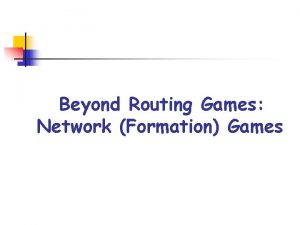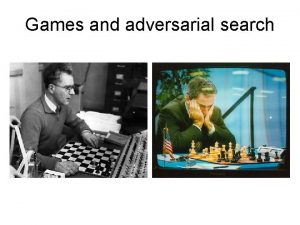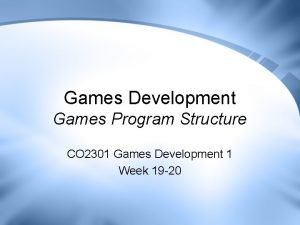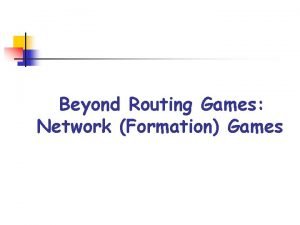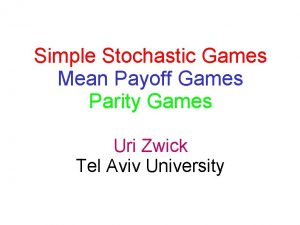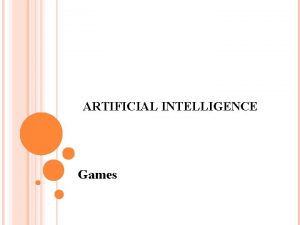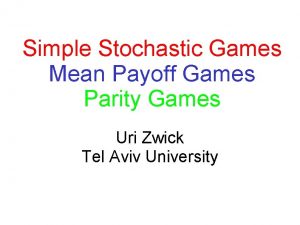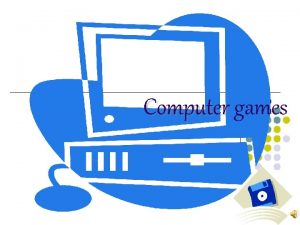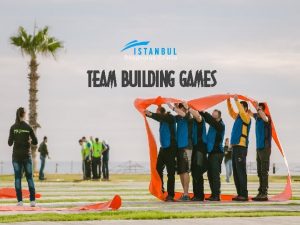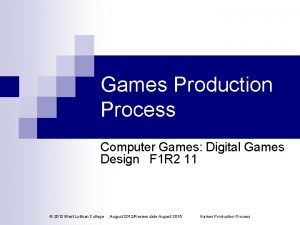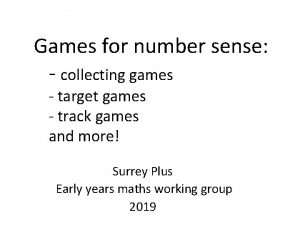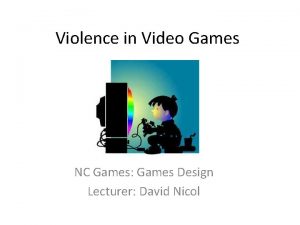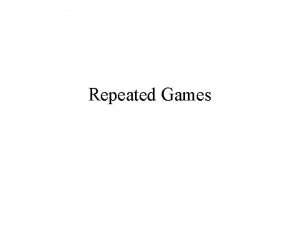What is the this morning Games that emphasize































- Slides: 31

What is the ? this morning Games that emphasize Attributes and Values

Why the ? on games that emphasize Attributes and Values 2

Regardless of the age/grade or subject of your students…. Research documents that teaching SIMILARITIES and DIFFERENCES will enhance students’understanding of and ability to use knowledge with a 45% gain. Understanding attributes and values is the foundational skill needed to recognize similarities and differences.

TODAY… Why is this ? Games that emphasize ATTRIBUTES and VALUES Transferab le Skill used i n math, lang uage arts, social studies, mu sic and more!

What is an Attribute? What is a Value? • An attribute is a characteristic such as size, weight, color, shape, texture. • A value is a specific of the characteristic such as size…. Small, medium, or large color…. Red, blue, yellow

Easy and Fun Introduction for all ages. • Compare to children…. or compare you, the teacher to a student. Let’s compare height? Tall/short (same or different) Let’s compare color of shirt? red/blue (same or different) • Now, compare you to the person next to you. Let’s compare shoes flipflops/running shoes (same or different) Let’s compare our hair long/short (same or different) Kids love to be involved, the center of attention, personal 6

Boolean People using Att/Values Sketch your Boolean Peeps! and or not I used this with every grade K-5… FUN Attributes include body shape: circular, triangular or square (any 3 shapes) body color: purple, red, green (any 3 colors) hair: spikey, long wavy, short curly legs: running, sitting, standing

Games using Attributes and Values And… Visual Perception As applied to science, social studies, math and language arts…. . and all research in your classroom!

SET Attributes and Values ATTRIBUTES values Color: purple, green, red Shape: oval, diamond, squiggly Number: 1, 2, 3 Fill: solid, empty, stripped Race to find a SET of three cards where each attribute is either all the same value or all different values on each card. Any 2 cards…. Can be made into a SET card! Find the right card! MAGIC RULE…. . If 2 of the cards are and one is not, then it is not a set.

Race to find a SET of three cards where each attribute is either all the same value or all different values on each card. Name the 3 colors _______________ Name the 3 colors red, purple, green Name the 3 shapes______________ Name the 3 shapes oval, diamond, squiggly Name the 3 fillings______________ Name the 3 fillings striped, filled, empty Name the 3 numbers _______________ Name the 3 numbers 1, 2, 3

Why Play SET? Because it has a rule of logic (three cards that are all the same or all different in each individual attribute/value), and because players must apply this rule to the spatial array of patterns all at once, AND…. they must use both left brain and right brain thought processes. This fun game actually exercises your brain!

SET, Quarto, Qwirkle also… Visual Perception Skills applied to science, social studies, math and language arts…. . and all research in your classroom! Visual perceptual skills include several key component areas: • Visual Discrimination: The ability to notice detail differences such as shape, size, color, or other dimensional aspects. • Form Constancy (Form Discrimination): The ability to perceive positional aspect differences and recognize objects when they are in a different orientation or format. • Figure Ground (Foreground-Background Differentiation): The ability to focus on a selected target and screen out or ignore irrelevant images. • Spatial Relations: The ability to recognize the positioning of objects in space. • Visual Closure: The ability to recognize an object, letter or number without seeing all of the object. • Visual Sequencing: The ability to see objects in a particular sequential order. • Visual Memory: The ability to remember forms (letters) and sequences of forms (words) and recognize them quickly when seen again.

SET, Quarto, Qwirkle also… Visual Perception Visual perception is the ability to see and interpret (analyze and give meaning to) the visual information that surrounds us. • The process of "taking in" one's environment is referred to as perception. If perception is inaccurate, incorrect or altered in any way - problems with reading, spelling, handwriting, math and comprehension occur. Visual perceptual skills involve the ability to organize and interpret the information that is seen and give it meaning. The importance of visual perceptual skills in academic success is agreed upon by many, acknowledging reading would not be possible without adequate visual perception. Visual perceptual processing impacts the ability to learn. • Without accurate visual perceptual processing, a student would have difficulty learning to read, give or follow directions, copy from the whiteboard, visualize objects or past experiences, have good eye-hand coordination, integrate visual information with other senses to do things like ride a bike, play catch, shoot baskets when playing basketball, or hear a sound and visualize where it is coming from (like the siren on a police car).

Visual Perception Games/Toys

Quarto Attributes and Values ATTRIBUTES values Color: light and dark Shape: circular and square Height: tall and short Fill: solid and hole Four in a row…. . With any one attribute the same is the winner!

Qwirkle Attributes and Values ATTRIBUTES values Colors: red, yellow, blue, purple, orange Shape: square, cross, star 1, star 2, circle Create and expand lines of color and shape strategically in order to score the most points. http: //www. ultraqwirkle. com/g ame-rules. php

TODAY… Why is this ? Games that emphasize ATTRIBUTES and VALUES Transferab le Skill used i n math, lang uage arts, social studies, mu sic and more!

Regardless of the age/grade or subject of your students…. Research documents that teaching SIMILARITIES and DIFFERENCES will enhance students’understanding of and ability to use knowledge with a 45% gain.

Kindergarten “Sorting” is similarities and differences using attributes and values to further enhance the “lesson” • You sort and classify objects every day, whether you realize it or not. Sorting is a fundamental skill that forms the basis of many skills in math, science, literature and social studies. Understanding how to sort is a skill we need to TEACH and emphasize and reinforce and build the skill year by year! • When you sort and classify objects (or pictures, or words, or anything else), you determine characteristics that the objects share, and characteristics they don't share. In other words, you identify how they are alike and how they are the same and different.

COMPLEXITY of CLASSIFICATION

Attributes and Values Attributes Color Shape Size Height Texture Material Values red, yellow, blue circular, triangular, oval, spiral large, medium, small tall, medium, short smooth, rough, bumpy, greasy metal, plastic, cloth, paper Other attributes: number, temperature, structure, hanitat, growth rate, movement, kind, use, classification, number of petals or legs,

DYO… Design Your Own saguaro cactus… Use the required attributes and values…. . then add some fun! Attribute: COLOR…… Values: green, blue, red Attribute: SPINES…… Values: none, long, short Attribute: ANIMAL…… Values: owl, bobcat, snake Attribute: SIZE…… Values: short, medium, tall Attribute: ARMS…… Values: 1, 2, 3 Attribute: FLOWERS/Fruits…… Values: 1 open, 3 open, 4 fruits

Using a VENN Diagram to Compare for understanding when reading or researching VENN right

Using a VENN Diagram to Compare VENN wrong

Using a VENN Diagram to Compare VENN right VENN wrong

Using a VENN Diagram to Compare VENN right VENN wrong

Using a VENN Diagram to Compare VENN right VENN wrong

Sorting by Attributes and Values

What’s My Rule? • Give every student a baby food jar…. Send them home to fill with 100 small things (only one of each) • Coin, piece of rice, pebble, battery, candy, feather, puzzle piece, marble, etc. • NOW PLAY …. “What’s My Rule? ” • You demonstrate by sorting some or all pieces into 3 -5 piles by any attribute (color, shape, material, size)…. . Students guess the rule. When they “get it”…. Try independent game time.

Compare… NOT Compare Polar bears live in the Arctic. Polar bears have black skin and although their fur appears white, it is actually transparent. It is the largest carnivore (meat eater) that lives on land. Polar bears use sea ice as a platform to hunt seals. Grizzly Bear Ursus arctos horribilis Standing as tall as 2. 5 m (8 ft) and weighing up to 360 kg (800 lbs. ), the grizzly bear is a subspecies of brown bear that inhabits western Canada and the northwestern United States. ies d u t S l Male polar bears can weigh up to 680 kg (1500 lb). Socia d Grizzly bears are specially adapted to survive the changing seasons. During warmer n a , ls. Female polar bears usually only weigh about half as much as males. iencemonths, they eat a massive amount of food so they can live off body fat during the e c v S e , l s t g winter, when food is scarce. They may intake 40 kg (90 lbs. ) of food each day, eadin age Ar r Polar bears spend most of their time at sea. u f gaining over 1 kg (2. 2 lbs. ) of body weight a day. As omnivores, grizzlies will eat g o n y a in L ariet anything nutritious they can find, gorging on nuts, fruit, leaves, roots, fungi, insects, v n o a i t Scientists estimate that there around 20000 polar bears. a a t c pli ures a and a variety of animals including salmon and other fish, rodents, sheep, and elk. t a Their diet varies depending on what foods are available for the season. e K-5 ap f t Polar bears have 42 teeth. ex t , n o i In the fall, as temperatures cool and food becomes scarcer, grizzlies dig dens in the rmat The scientific name for the polar bear is ‘ursus maritimus’. o f n i e r sides of hills. They have long rounded claws (the size of human fingers) and a large a p Polar bears keep warm thanks to nearly 10 cm of blubber under the skin. Com mass of muscles on their backs that help them dig. These characteristics, along with Seals make up most of a polar bears diet. Polar bears have an excellent sense of smell, with the ability to detect seals nearly a mile away (1. 6 km). Polar bears can reach speeds up to 40 kph (25 mph) on land 10 kph (6 mph) in water. The polar bear was the mascot for the 1998 Winter Olympics in Calgary, Canada. small rounded ears and white-tipped (or “grizzled”) fur, distinguish grizzly bears from black bears. - See more at: http: //www. animalfactguide. com/animal-facts/grizzlybear/#sthash. DCo. OECh. U. dpuf

Please make sure… They get it!! Build UNDERSTANDING and Check for UNDERSTANDING
 Tìm vết của mặt phẳng
Tìm vết của mặt phẳng Sau thất bại ở hồ điển triệt
Sau thất bại ở hồ điển triệt Thơ thất ngôn tứ tuyệt đường luật
Thơ thất ngôn tứ tuyệt đường luật Con hãy đưa tay khi thấy người vấp ngã
Con hãy đưa tay khi thấy người vấp ngã Thơ thất ngôn tứ tuyệt đường luật
Thơ thất ngôn tứ tuyệt đường luật Tôn thất thuyết là ai
Tôn thất thuyết là ai Ngoại tâm thu thất chùm đôi
Ngoại tâm thu thất chùm đôi Chiến lược kinh doanh quốc tế của walmart
Chiến lược kinh doanh quốc tế của walmart Gây tê cơ vuông thắt lưng
Gây tê cơ vuông thắt lưng Block nhĩ thất độ 2 type 1
Block nhĩ thất độ 2 type 1 Chapter 3 hunger games questions
Chapter 3 hunger games questions Outdoor games and indoor games
Outdoor games and indoor games This morning games
This morning games Good morning class!
Good morning class! Nobody loves me like you love me jesus
Nobody loves me like you love me jesus Good night i am glad to see you
Good night i am glad to see you Morning bells are ringing morning bells are ringing
Morning bells are ringing morning bells are ringing Good morning teacher and class
Good morning teacher and class Good morning responses
Good morning responses Good afternoon teacher my name is
Good afternoon teacher my name is Good afternoon morning
Good afternoon morning Simile in stereo hearts
Simile in stereo hearts You a worksheet to emphasize certain entries
You a worksheet to emphasize certain entries High-context cultures emphasize nonverbal messages.
High-context cultures emphasize nonverbal messages. Situational theory of leadership emphasize
Situational theory of leadership emphasize Humanistic theories emphasize
Humanistic theories emphasize Accentuate definition
Accentuate definition Emphasize that profitable marketing
Emphasize that profitable marketing The soviet union: what should textbooks emphasize
The soviet union: what should textbooks emphasize What does emphasize mean?
What does emphasize mean? Transnational strategy vs global strategy
Transnational strategy vs global strategy Capital budgeting decisions emphasize flows.
Capital budgeting decisions emphasize flows.












